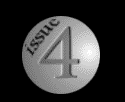|
One of the central devices in the process of identification is
the use of the close-up. The heroine stares out of a window or
into space at moments of crisis and we identify with the look of
anguish or loss on her face (Scarlett O'Hara in Gone with the Wind
[1939], Ilsa in Casablanca [1942]).
  Ingrid Bergman as Ilsa in Casablanca. Ingrid Bergman as Ilsa in Casablanca.
In this case, to identify with
the look of anguish in the close-up is to see through it into the
pain or suffering that we recognize as causing it. The image is
merely a vehicle for the expression of some definite emotion and
it is this emotion that we can identify with. The emotion is
oftentimes so clear that we don't need to go to the image to
figure anything out. In other words, we don't see the image of the
face as a clue to the character, rather, we can see right through
the image to the emotion that is being expressed. Loosely
speaking, in most French and American cinema this had been the
function of the close-up; it was there to facilitate access into
the character's mind.
The first thing to note about the New Wave directors is that
they make no attempt to simplify their characters. Rather than
giving us strong narrative lines that clue us into exactly what it
is the heroine is going through, the New Wave picture gives us
diverse presentations of its characters through a number of
loosely connected scenarios and thus we can form rich,
multifaceted understandings of what these characters are like. Les
Quatre Cent Coups gives us a good example of this as Truffaut
presents different scenes from Antoine's life, some showing him to
be innocent and good, others portraying him as feckless and cold.
This richness of character is a factor in altering the usage of
the close-up; now it is no longer a transparent image, through
which we perceive the over-simplified emotions of the heroine.
Instead, the image is arresting; it calls upon us to ask the
question of the main character: "what is she thinking?" Truffaut
and Godard use different methods to achieve this effect and we
will see a progression in these methods towards a presentation of
the face as face and nothing besides.
page 1 of 4

|

